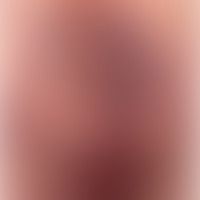Image diagnoses for "Plaque (raised surface > 1cm)", "red"
429 results with 1893 images
Results forPlaque (raised surface > 1cm)red

Lupus erythematosus acute-cutaneous L93.1
lupus erythematosus acute-cutaneous: clinical picture known for several years, occurring within 14 days and still with relapsing course at the time of admission. in contrast to the anular pattern on the trunk, irregular, blurred red plaques. in the current relapsing phase fatigue and exhaustion. ANA 1:160; anti-Ro/SSA antibodies positive. DIF: LE - typical.
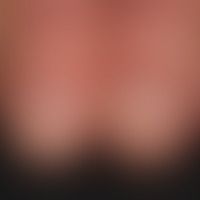
Dermatomyositis (overview) M33.-
Dermatomyositis (Keining's sign): Flat red plaques on the end phalanges, periungually reinforced; hyperkeratotic nail folds with linear bleeding)
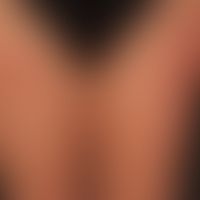
Nummular dermatitis L30.0
Nummular dermatitis: Extensive nummular lesions that havebeen present for several months with blurred, considerably itchy papules and confluent plaques. No hinwesi for psoriasis. No evidence of atopic diathesis.
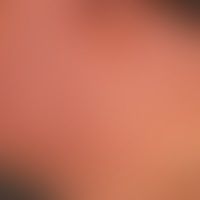
Airborne contact dermatitis L23.8
Airborne Contact Dermatitis: Chronic, massively itching and burning, lichenified dermatitis, which is limited to the freely carried skin areas. Lower boundary only blurred (leaking eczema foci), a typical feature of contact allergic eczema. Retroauricular region is also affected.

Nevus sebaceus Q82.5
Sebaceous nevus: 25-year-old man; the reddish-brownish plaque, interspersed with whitish papules, was completely painless since birth; the excision was performed without complications and without spindle; a sebaceous nevus could be histologically confirmed.
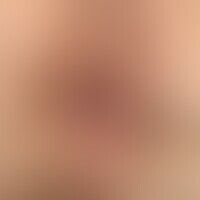
Acuminate condyloma A63.0
Perianal and scrotal localized small, pointy-headed, reddish, soft papules in a 24-year-old patient.

Borrelia lymphocytoma L98.8
Lymphadenosis cutis benigna: painless, non-itching, calotte-shaped, firm red lump that has been present for 3 months, no scaling.
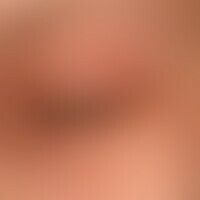
Atopic dermatitis (overview) L20.-
Eczema, atopic: chronic, unpleasant itchy eczema of both eyelids. Known atopic diathesis "hay fever".

Dermatitis contact allergic L23.0
Dermatitis contact allergic: Recurrence with previously known sensitization by para-phenylenediamine; now renewed hair coloration with acute exacerbation of the "former" dermatitic plaques.

Seborrheic dermatitis of adults L21.9
Dermatitis, seborrhoeic: Flat, symmetrical (butterfly-like - DD: rosacea, systemic lupus ertyhematosus), blurred, location-constant and therapy-resistant, coarsely scaly red plaques.

Sarcoidosis of the skin D86.3
sarcoidosis. small-nodular, disseminated sarcoidosis in a 45-year-old man. development of the depicted skin lesions over a period of 6 months. findings: extensive, reddish-brownish, completely asymptomatic, little infiltrated, barely pinhead-sized flat papules, which have conflued to flat plaques. recess of the contact point of the wristwatch. no evidence of system involvement.

Pagetoid reticulosis C84.4
Reticulosis, pagetoid (disseminated type Ketron and Goodman): For several years slowly migrating, partly anular, partly garland-shaped, little itchy, brown-red, only minimally elevated, broadly margined plaques with parchment-like surface.
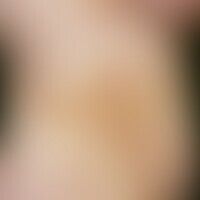
Parapsoriasis en plaques large L41.4
Parapsoriasis en plaques,grandes plaquesForm (Parapsoriasisen grandes plaques): completely symptom-free, yellow-brown (purpura pigmentosa-like), sharply defined spots; only when the skin is wrinkled is a cigarette-paper-like pseudoatrophic architecture of the skin surface discernible (important diagnostic sign!).
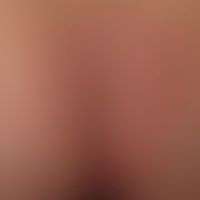
Psoriasis (Übersicht) L40.-
Psoriasis with pronounced affection of the buttocks region. The symmetrical affection of the buttocks region can be seen as Köbner phenomenon. Circumscribed a previously known keratosis follicularis.

